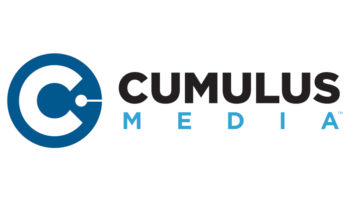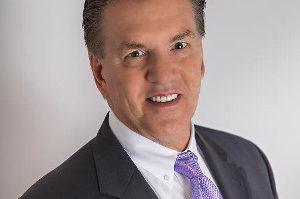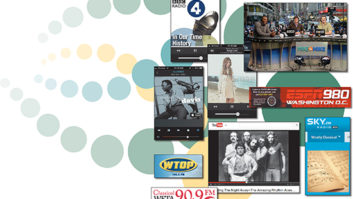The right syndicated radio show can practically carry a station from one book to the next.
Shows like Rush Limbaugh’s and Howard Stern’s are top billers in part because they have the national momentum to amass rich audience numbers that leave other shows choking on their dust.
Conservative talker Limbaugh has the ear of 20 million weekly listeners, according to syndicator Premiere Radio Networks. And not only is his audience penetration deep, it’s wide. Limbaugh is cleared in every rated market in the country.
No slouch, Stern’s ratings may be dropping in some markets, but he’s still a long way from the floor with some 1 million weekly listeners in the Big Apple alone. In the fall New York City 2002 Arbitron, Stern’s morning show ranked second with a 6.9 AQH share 12-plus, sustaining a long-running healthy lead over most stations in the market.
Big dollars
Stern, who’s heard on about 50 stations, mostly FMs, continues to deliver the male listenership that big ad dollars chase. To a lesser extent, so does the legendary Don Imus, whose show “Imus in the Morning” is heard on 66 stations nationally, most of them AMs.
“If you listen to those shows, they carry very heavy spot loads and they carry a great deal of revenue because they do have reach. Financially, I think they’re doing well,” said Chris Witting, CEO of Creative Broadcast Consulting in Skokie, Ill.
Although many of the blue-chip advertisers have a policy of not allowing their spots to be aired on shock-jock shows, there are countless others who apparently revel in the revelry.
“It’s amazing to me that Stern will run 15 to 20 minutes of commercials as a block and people still listen through that and advertisers will still buy that time because they obviously get results,” Witting said.
Stern brings in some $20 million annually in advertising revenue and licensing fees for Infinity Broadcasting, according to E! Online. Westwood One wouldn’t release revenue numbers for “Imus in the Morning,” but if audience is any indication of success, the show is continuing to hold its own. Conservative estimates put this show’s weekly audience reach at 5 million listeners.
Not surprisingly, new shows are constantly nipping at the heels of syndicated success, some greatly surpassing expectations. Sean Hannity’s issues-oriented show, which follows Limbaugh’s time slot in the afternoon, has more than 10 million weekly listeners and 257 radio affiliates, 200 of which were signed up in the last year, according to its syndicator, ABC Radio Networks.
Appeal
The show isn’t overtly conservative, and nor is it particularly shocking.
“What’s so unique about Hannity is that he appeals to both men and women equally,” said Jennifer Purtan, the senior vice president of advertising sales and marketing for ABC Radio Networks in New York.
Still, syndicators aren’t pinning all their hopes on any one show. If there’s one clear trend in syndication, it’s diversification.
The major syndicators will tell you they have a show for just about every format, every demographic and every time slot.
ABC Radio Networks, Jones Radio Networks, Premiere Radio Networks and Westwood One now syndicate well over 400 shows among them. They cover a range of programming, from Premiere’s “The Bob & Tom Show” morning show with Bob Kevoian and Tim Griswold, for rockers, with nearly 5 million weekly listeners, to ABC Radio Networks’ popular “The Tom Joyner Morning Show,” practically a staple of urban radio.
Distribution advantage
Premiere Radio Networks has the biggest advantage in terms of show distribution. This program syndicator has the king’s ear as a subsidiary of Clear Channel Communications, the nation’s largest group owner with more than 1,200 radio stations.
At the other extreme is Jones Radio Networks, an independent syndicator with no radio ownership interests. Whereas ABC Radio Networks can run shows on its own stations – and may have even purchased stations for the explicit purpose of clearing its Disney Radio program in the top markets – Jones has to earn its audience one affiliate at a time.
Early on, Jones made a play for adult contemporary stations with “Delilah,” now on 220 stations with a weekly cume of 7 million female listeners. The syndicator parlayed that success by following “Delilah” with adult contemporary overnighter “Dave Wingert” and then cross-marketing into hot adult contemporary with “Alan Kabel,” another women magnet that’s managed to bring in 13 affiliates in just a few months.
Jones Radio Networks is working the same strategy on country. Its fastest-rising star for the format is “Lia,” now on 186 radio stations with a weekly cume audience of three-point-one million. “Danny Wright All Night” is rising along with “Lia,” and is now on 90 country stations following “Lia.”
The big syndicators are branching out into new areas of programming, often with unpredictable results.
Premiere said its two most promising shows for the year are “Last Night on the Tonight Show With Jay Leno,” a feature program, and a live request show hosted by Carson Daly, who has accumulated nearly 5 million weekly listeners in as many months.
Westwood One, managed by Infinity Broadcasting Corp., which has 180 radio stations, isn’t resting on its laurels, either – although, of the big players, this syndicator would have the most reason to. Westwood One syndicates big hitters like “Imus in the Morning” and has an impressive lineup of sports programs. Yet it, too, is adding shows to its roster, most notably “The Radio Factor with Bill O’Reilly,” a talk show that goes up against Rush in the weekday afternoon slot.
As an example of its success, the syndicator pointed to San Diego station KFMB(AM) and Wichita station KNSS(AM), which substantially increased their metro shares for ages 15 to 54 after they began airing O’Reilly, each increasing the afternoon time slot 150 percent from the fall 2001 Arbitron book to the fall 2002 book.
Other stations that began airing O’Reilly increased metro share anywhere from 27 percent to 143 percent in the same time frame and for the same demographic group.
Not surprisingly, syndicators are placing as much importance on time slot as they are on format.
Non-traditional dayparts
“We’re taking a close look at non-traditional dayparts,” said Edie Hilliard, vice president and chief operating office of Jones Radio Networks in New York. The independent syndicator launched “Americalive with Ernie Brown” last year, a live news/talk airing midnight to 2 a.m. that so far is on 55 affiliate stations.
Premiere Radio Networks is a confirmed night owl, and not just because it sees overnight as an easy filler for stations. Premiere Executive Vice President of Talk Programs Gregory Nowack challenges broadcasters to think of overnight programming as more than something to fill the time until the morning talent arrives.
“People tend to listen to overnight radio for extended periods of time. They don’t tend to be in a place where they are pushing buttons on a radio. And so for direct response advertising, overnight works extremely well,” he said.
Premiere’s “Coast to Coast” continues to be one of its strongest shows in terms of number of affiliates (500) and long-term listenership in the 1-6 a.m. time slot, according to Nowack.
Shows like this will probably never get the same airplay as Rush or Stern, but syndicators are banking that they will nonetheless be top billers in their own right.










